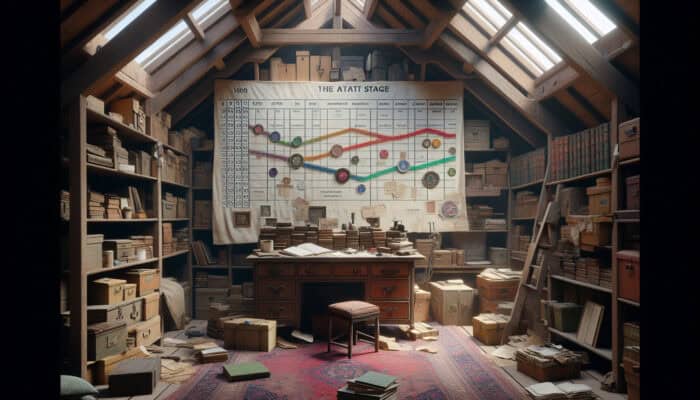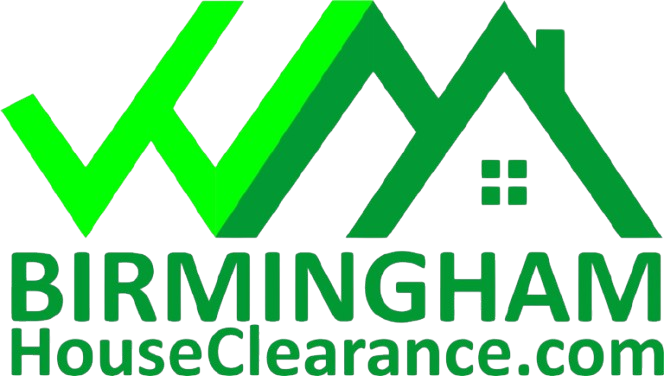Comprehensively Navigating UK Attic Clearance Regulations
Understanding Essential Legal Obligations

Clearing a UK Attic Within Regulations: Successfully navigating the intricate landscape of UK regulations is crucial when clearing a UK attic within the required guidelines. The foundational step involves grasping the comprehensive legal framework that governs attic clearance, including planning permissions, building regulations, and health and safety laws. Local councils often have specific guidelines that dictate the procedures for clearing attics, especially if the property is classified as listed or situated within a conservation area. Familiarity with these regulations is critical to avoid potential legal issues.
Moreover, if the attic clearance requires any structural modifications, it is essential to consult with a qualified professional to ensure compliance with the Building Act of 1984. This legislation mandates that any alterations must maintain structural integrity and not jeopardise the overall safety of the building. Non-compliance with these regulations can result in substantial fines or even legal proceedings, making it essential for homeowners to ensure that all work is conducted within the bounds of the law.
Most councils across the UK require homeowners to submit a notification before commencing any significant work. This is particularly pertinent for attics, as many properties contain unique structural features that must be preserved and protected. Homeowners should rigorously research the specific requirements of their local council, recognising that these can vary significantly across regions—from bustling London to the tranquil rural countryside—ultimately influencing their approach to clearing a UK attic within regulations.
Prioritising Health and Safety During Clearance
Safeguarding health and safety is paramount throughout the attic clearance process, as these spaces can present numerous hazards. The UK Health and Safety Executive (HSE) outlines various critical guidelines that must be followed to protect all individuals involved in the clearance. These guidelines emphasise the necessity for ensuring that the attic is adequately ventilated to prevent the build-up of harmful dust and gases. Utilising appropriate protective gear, such as masks, gloves, and safety goggles, can prevent injuries caused by sharp objects or hazardous materials present in the attic.
Conducting a thorough risk assessment before initiating any clearance project is essential. This involves identifying potential hazards, including electrical lines, gas pipes, or fragile materials. If you have any concerns about the structural integrity of the attic, it is advisable to seek professional assistance. The presence of asbestos, a material commonly found in older homes, poses a significant risk during attic clearance. Homeowners are encouraged to have their attics assessed for asbestos and to hire licensed experts for its safe removal.
Training is also a crucial element in maintaining health and safety standards during attic clearance. Homeowners and their assistants should be educated on proper lifting techniques and the correct handling of tools and equipment, which can significantly minimise the risk of accidents. Adhering to the guidelines set forth by the HSE not only fosters a safer working environment but is also a legal requirement, thereby making it an indispensable part of compliance with regulations for clearing an attic.
Environmental Regulations Impacting Attic Clearance
Environmental regulations play a pivotal role in the process of clearing a UK attic in accordance with regulations. The UK has stringent laws governing waste disposal, especially concerning hazardous materials. Homeowners must be vigilant about how to properly dispose of items, including old electronics, batteries, or materials containing asbestos. Local councils frequently provide explicit guidelines on what can be recycled or disposed of in landfills, and adhering to these instructions is crucial to avoid penalties.
Furthermore, the Waste Electrical and Electronic Equipment (WEEE) Directive mandates that electrical items be disposed of responsibly. Many councils offer designated drop-off points for these items, ensuring they are recycled rather than being sent to landfills. Homeowners should thoroughly investigate local recycling and disposal options to ensure compliance with environmental regulations and to contribute positively to waste management efforts.
Adopting sustainable practices during the attic clearance process not only benefits the environment but also presents homeowners with the opportunity to repurpose items in a creative way. Objects such as old furniture, toys, or books can often be donated or sold instead of being discarded. This approach aligns with UK regulations while promoting a culture of recycling and reuse within communities, making it an integral part of clearing a UK attic in compliance with regulations.
Strategically Preparing for Attic Clearance

Thoroughly Assessing the Attic Space
Before undertaking the significant task of clearing a UK attic within regulations, it is vital to conduct a comprehensive assessment of the attic. This initial evaluation should focus on examining the structural integrity of the space, checking for issues such as leaks, mould, or indications of pest infestations. Homeowners should meticulously document these findings, as they can inform the clearance strategy and determine whether professional assistance is warranted.
Evaluating the items stored within the attic is equally important. Homeowners should compile a detailed inventory of the contents, categorising them into groups such as keepsakes, valuables, and items designated for disposal. This systematic approach not only streamlines the clearance process but also facilitates informed decisions about what to keep, sell, or donate. Including photographs in this inventory can be beneficial, particularly for valuable items that may necessitate insurance documentation.
Moreover, understanding the layout and access points of the attic can significantly impact the clearance process. Homeowners should consider the dimensions of the items they plan to remove and assess whether the current access is sufficient to accommodate them. For larger items, it may be necessary to temporarily remove the attic hatch or even contemplate installing a larger access point. All these considerations contribute to a well-planned strategy that facilitates the process of clearing a UK attic in compliance with regulations.
Essential Tools for Effective Attic Clearance
Equipping oneself with the appropriate tools is crucial when preparing for attic clearance. A well-stocked toolkit can greatly streamline the process and enhance safety. Essential tools include a sturdy ladder to ensure safe access, gloves for hand protection, and face masks to protect against dust and allergens. Additionally, having a robust bin or bag for collecting waste is invaluable, as it makes it easier to sort through items efficiently.
Beyond these basic tools, homeowners might find that investing in additional equipment can make the clearance process smoother. Tools such as a vacuum cleaner designed specifically for debris removal can effectively eliminate dust and small particles. For larger items or debris, a dolly or hand trolley can facilitate the safe and efficient transport of heavier items down from the attic.
Proper lighting is another crucial aspect of attic clearance. Often, attics are poorly lit, so utilising portable work lights can enhance visibility, resulting in a safer and more effective clearance process. Knowing precisely which tools are required in advance not only prepares homeowners but also reduces the likelihood of delays during the actual clearance, making it a more manageable task to clear a UK attic within regulations.
Strategically Planning the Clearance Process

Effective planning is an indispensable step in the attic clearance process, particularly when clearing a UK attic by regulations. Homeowners should develop a timeline for the clearance that accommodates their schedules while allowing ample time for sorting, cleaning, and disposing of items. This timeline should encompass specific milestones such as deadlines for sorting items, completing the clearance, and final disposal or donation of unwanted goods.
An effective strategy may also involve enlisting the help of family or friends to assist with the process. Clear communication regarding the roles and responsibilities of each individual can enhance both the enjoyment and efficiency of the project. Designating a specific day or weekend for the clearance can help keep everyone motivated and focused on the task at hand.
Resource allocation is another critical component of the planning phase. Homeowners should assess what resources—both in terms of time and finances—will be necessary for hiring professionals if specialised clearance services are required. This could encompass engaging waste disposal companies, pest control experts, or structural engineers if any repairs are identified during the initial assessment. By considering these factors, homeowners can ensure a smooth and compliant process of clearing a UK attic within regulations.
Implementing Safety Measures for Attic Clearance
Establishing safety measures is not merely a recommendation but an absolute necessity when it comes to clearing a UK attic within regulations. Creating a safe working environment begins with a thorough risk assessment that identifies potential hazards such as exposed beams, electrical wiring, or unstable stacks of items. Homeowners must ensure the attic is devoid of any hazards before commencing the clearance process.
Utilising proper personal protective equipment (PPE) is vital. This includes sturdy boots, gloves, safety goggles, and masks to protect against sharp edges, falling debris, and harmful dust. All helpers must be adequately equipped with the appropriate PPE as well. It’s essential to remind everyone involved to exercise caution when navigating the attic space, especially when moving items or working near the edges.
Moreover, ensuring proper ventilation in the attic is critical, particularly if there is a risk of mould or harmful fumes. Opening windows or installing a fan can greatly enhance airflow. If there are concerns about hazardous materials, such as asbestos, it is advisable to engage a qualified professional to conduct an assessment and removal. Implementing these precautions not only protects individuals but also ensures compliance with UK regulations regarding health and safety during attic clearance.
Systematic Sorting and Organising of Attic Items
A fundamental aspect of clearing a UK attic within regulations is the systematic sorting and organising of items uncovered during the clearance process. Homeowners should categorise items into distinct groups: those to keep, sell, donate, or discard. This methodical approach simplifies decision-making and enhances efficiency in managing attic contents.
When determining the value of items, it is essential to consider both their sentimental and monetary worth. Family heirlooms, antiques, and collectable items may hold more significance than their surface value indicates. Homeowners should investigate these items online or consult with auction houses to ascertain their worth. This knowledge can not only guide decisions about what to retain but may also unveil opportunities for selling items that no longer serve a purpose.
For items deemed hazardous or unsuitable for conventional waste disposal, understanding the correct disposal methods is crucial. Products containing chemicals, such as old paint or batteries, must be disposed of at designated recycling centres. Homeowners need to follow local guidelines to ensure safe and responsible disposal, thereby contributing to the overarching goal of clearing a UK attic within regulations while also ensuring safety and compliance with legal requirements.
Executing the Attic Clearance Process
Safely Removing Items from the Attic
The methodical removal of items from the attic is a crucial aspect of clearing a UK attic by regulations. Homeowners should initiate the process with a clear plan that prioritises the tackling of heavier items first to mitigate the risk of accidents. Using a sturdy ladder and ensuring it is positioned on a stable surface is essential for safely accessing items stored at height.
When lifting items, it is essential to use proper lifting techniques. Homeowners should bend at the knees and keep the item close to their body to avoid strain. If an item is too heavy or unwieldy, enlisting the help of another person or utilising moving equipment can significantly reduce the likelihood of injury.
Care should also be taken when navigating through the attic space. Maintaining clear pathways is essential to prevent tripping hazards. When moving larger items, doing so carefully and methodically will ensure safety throughout the process. Any items designated for disposal should be placed into designated bags or bins, effectively preventing clutter and complications during the clearing of a UK attic.
Thoroughly Cleaning the Attic Space
Once the items have been successfully cleared from the attic, conducting a thorough cleaning of the space is essential. Over time, dust and debris can accumulate, and a comprehensive clean-up helps ensure the area is safe and pleasant for use. Homeowners should begin by removing any remaining debris or dust using a vacuum cleaner or broom to facilitate a pristine environment.
It is also crucial to inspect all surfaces for signs of mould or pest presence. If mould is identified, it is advisable to engage a professional service to address the issue safely. Similarly, any indications of pest infestations should be reported to pest control specialists who can assess and rectify the problem effectively.
Following this cleaning process, homeowners should contemplate applying protective treatments, such as anti-mould sprays, especially if the attic will be used for storage in the future. These precautions help maintain a clean, safe, and compliant attic space, ensuring ongoing adherence to regulations during the continuous process of clearing a UK attic within regulations.
Conducting a Comprehensive Inspection for Damage
After the attic has been cleared and cleaned, it is essential to conduct a thorough inspection for any signs of damage. This scrutiny should encompass the roof, walls, and flooring. Homeowners should inspect their property for cracks, water stains, or any areas that may have been compromised during the clearance process.
Examining the insulation is equally critical; damaged or damp insulation may require replacement to ensure the attic remains energy-efficient and pest-free. Should any structural damage be identified, it may be necessary to consult with a professional builder or surveyor to evaluate the required repairs.
Documenting any damage is essential, particularly if it impacts overall compliance with UK regulations. Homeowners should consider keeping a record of findings and any actions taken, as this documentation can be beneficial for future reference, both for maintenance and compliance purposes, during the clearance of a UK attic by regulations.
Effective Disposal and Recycling Strategies
Understanding Proper Waste Disposal Methods
Grasping the correct methods for disposing of waste generated during attic clearance is a crucial aspect of clearing an attic in the UK, as it involves complying with regulations. Recognising that not all items can be discarded in standard rubbish collections, local councils provide specific guidelines regarding waste disposal to ensure compliance with environmental regulations.
For general waste, homeowners should familiarise themselves with their local council’s policies on bulky waste collections or designated drop-off points. Many councils offer specific days or locations for disposing of larger items, which helps avoid fines associated with improper disposal practices.
Hazardous materials, including chemicals and electronic waste, require special attention. Homeowners should locate nearby recycling centres that accept such items, ensuring they are handled safely and by UK regulations. Improper disposal of these materials can lead to significant penalties, underscoring the importance of adhering to local guidelines throughout the process of clearing a UK attic.
Exploring Recycling Options for Attic Items
Investigating recycling options is an integral part of managing waste when clearing a UK attic, as mandated by regulations. Many items discovered in attics can be repurposed or recycled, reducing landfill usage and contributing to environmental sustainability efforts. Local councils frequently provide specific recycling facilities for various materials, including paper, cardboard, plastics, and metals.
For larger items such as furniture, homeowners should consider reaching out to local charities that may accept donations. Many organisations offer collection services directly from homes, simplifying the donation process and ensuring these goods are reused rather than discarded in landfills. This practice not only provides the opportunity to assist others but also aligns with UK initiatives aimed at minimising waste.
Additionally, online platforms and community groups present opportunities to recycle or sell unwanted items, fostering a sense of community while reducing clutter. Engaging in these practices not only fulfills compliance requirements but also contributes to building a more sustainable environment during the clearing a UK attic within regulations.
Thoughtfully Donating Usable Items
Donating usable items uncovered during attic clearance is a generous way to give back to the community while clearing a UK attic in compliance with regulations. Charitable organisations and non-profit organisations actively seek donations of gently used items, including clothing, toys, and household goods. By ensuring these items do not go to waste, homeowners can make a significant contribution to local social causes.
Before donating, it is essential to assess the condition of the items. Charities often provide guidelines on what they accept; therefore, checking their websites or contacting them directly can expedite the donation process. For larger or bulkier items, many charities offer collection services, further simplifying the donation effort for homeowners.
Moreover, consider involving local community groups or schools that may benefit from donations, especially for items like books or sports equipment. This approach not only promotes recycling but also strengthens community ties, creating a holistic framework for clearing a UK attic within regulations that benefits all parties involved.
Documenting the Attic Clearance Process
Systematically Keeping Records
Maintaining comprehensive records is an often-overlooked yet vital component of complying with UK attic regulations. Documentation serves multiple purposes, ranging from ensuring compliance with local laws to providing a detailed history of the attic’s contents and the clearance process undertaken. Homeowners should develop an organised system for recording each step taken throughout the clearance.
This could entail maintaining a diary or log that details the items removed, decisions made regarding their future, and any challenges encountered along the way. Photographs taken at various stages can also serve as invaluable documentation, particularly if any disputes arise concerning waste disposal or adherence to local regulations. Such records may prove beneficial for insurance purposes, offering evidence of actions taken during the clearance.
Furthermore, noting any structural issues identified during the clearance is essential. Should repairs be necessary, having a detailed record will help professionals understand the attic’s condition and facilitate compliance with building regulations moving forward. The importance of thorough documentation during the clearing of a UK attic within regulations cannot be overstated, as it forms the foundation upon which future maintenance and compliance can be built.
Photographing Before and After the Clearance
Capturing before-and-after photographs of the attic significantly aids in documenting the clearance process and enhances the effectiveness of clearing a UK attic within regulations. Before commencing the clearance, taking photographs provides a visual record of the attic’s condition, including clutter, structural concerns, and any hazards that may be present. This documentation serves as important evidence of the attic’s initial state, useful for compliance and potential future reference.
After the clearance and cleaning, capturing photographs of the transformed space can be equally valuable. This not only visually showcases the efforts made but also highlights improvements in safety and usability. Homeowners may find these photographs advantageous for insurance claims or for showcasing their property to potential buyers should they decide to sell.
Additionally, documenting the clearance process with photographs can serve as inspiration for others in the community facing similar challenges, providing them with a visual roadmap to follow. By effectively photographing the process, homeowners contribute to the broader narrative of clearing a UK attic within regulations as a responsible and rewarding endeavour.
Reporting Clearance Activities to Relevant Authorities
In certain circumstances, it may be necessary to report the attic clearance to local authorities, especially if significant structural changes or the removal of hazardous materials are involved. Understanding when and how to report such activities is crucial in ensuring compliance with UK regulations and avoiding potential penalties.
Homeowners should consult local council guidelines to ascertain if any reporting is required. This may include notifying authorities about the removal of hazardous materials, particularly if asbestos is involved, or when substantial alterations are made to the attic space. Engaging with local authorities can help clarify what documentation or reports are necessary, ensuring that the clearance complies fully with legal requirements.
By proactively managing the reporting of attic clearance, homeowners not only safeguard their interests but also contribute to community safety and compliance. This diligence plays a vital role in the overall success of clearing a UK attic within regulations.
Strategies for Maintaining Your Attic
Implementing Strategies to Prevent Future Clutter
Once an attic has been successfully cleared, maintaining that newfound order is essential to prevent future clutter. Establishing a system for regular checks can help keep the attic space organised and free from unnecessary items. Homeowners can schedule seasonal inspections to assess what items remain and decide if any should be removed or reorganised.
Encouraging a “one in, one out” policy can also be beneficial. For example, if a new item is added to the attic, consider removing an item of similar size or function. This practice not only limits clutter but also ensures that the attic remains a functional and compliant space moving forward.
Moreover, creating a designated storage solution for items that need to be retained can enhance organisation. Utilising sturdy bins, shelves, or storage boxes that are clearly labelled can help maintain order, making it easier to locate items when necessary. By implementing these strategies, homeowners can effectively ensure their attic remains clutter-free and compliant in the long term, aligning with the overarching goal of clearing a UK attic by regulations.
Conducting Regular Inspections for Maintenance
Scheduling regular inspections of the attic is paramount for ongoing maintenance and compliance. These inspections can help identify any emerging issues, such as leaks, pests, or structural concerns, before they escalate into more serious problems. Homeowners should establish a timetable for these inspections, ideally coinciding with seasonal changes or following severe weather events that may impact the attic space.
During these inspections, homeowners should also review the items stored in the attic. This provides an opportunity to evaluate whether certain items should continue to occupy space or if they can be recycled, donated, or disposed of. By establishing a routine that encompasses both inspections and evaluations of stored items, homeowners can ensure that their attic remains a safe and compliant space for the long term, directly connected to the principles of clearing a UK attic within regulations.
Upgrading Attic Space for Enhanced Functionality
Transforming the attic into a usable space can significantly enhance both the value and functionality of a home. Homeowners should consider options such as converting the attic into a study, playroom, or even an extra bedroom. Such upgrades can increase the property’s resale value while optimally utilising available space.
Before undertaking any upgrades, however, it is crucial to consult local regulations and obtain any necessary planning permissions. Understanding the structural implications and ensuring compliance with building regulations is essential. Engaging professionals for design and construction can help navigate these requirements effectively, ensuring a smooth upgrade process.
Incorporating insulation and soundproofing during these upgrades can make the attic a more comfortable space. By planning carefully and adhering to regulations, homeowners can create a versatile and valuable area that aligns with the ethos of clearing a UK attic within regulations.
Implementing Effective Pest Control Measures
To protect the attic from potential infestations, implementing pest control measures is essential. Attics can be vulnerable to issues with rodents, insects, or other pests if not properly maintained. Homeowners should conduct regular inspections for signs of pest activity, including droppings, nests, or damage to insulation.
Sealing any gaps or entry points can significantly reduce the likelihood of pests accessing the attic. This includes checking vents, ducts, and any holes in the roof or walls. Additionally, it is wise to store items in sealed containers to deter pests from being attracted to food sources or nesting materials.
Regularly scheduled professional pest control treatments can also be beneficial, particularly in older homes where infestations may be more common. By prioritising pest control, homeowners can maintain a healthy attic environment, ensuring the space remains compliant and safe long after clearing a UK attic within regulations has been accomplished.
Addressing Frequently Asked Questions
What are the legal requirements for attic clearance in the UK?
Legal requirements can vary by location; however, homeowners generally must comply with building regulations and local council guidelines regarding waste disposal and structural changes.
How can I ensure health and safety while clearing my attic?
Utilising protective gear, ensuring adequate ventilation, and conducting a risk assessment are critical steps in maintaining health and safety during attic clearance.
What should I do with hazardous materials found in my attic?
Hazardous materials must be disposed of at designated recycling centres. It is advisable to contact your local council for guidance on safe disposal practices.
How often should I inspect my attic after it has been cleared?
Regular inspections should be scheduled at least once or twice a year to detect any signs of damage or pest infestations early on.
Can I donate items I find in my attic?
Yes, many charities accept donations of usable items. It is advisable to check with local organisations regarding their donation policies.
What are the best tools for clearing an attic?
A sturdy ladder, gloves, masks, trash bags, and a vacuum cleaner are essential tools for effective attic clearance.
How can I prevent future clutter in my attic?
Implement a “one in, one out” policy and schedule regular checks to evaluate and reorganise items stored in the attic.
What upgrades can I make to my attic space?
Consider converting your attic into a home office, playroom, or extra bedroom. Ensure all upgrades comply with local regulations.
Do I need planning permission to upgrade my attic?
You may require planning permission, depending on the extent of the work and the location of your property. Always consult with your local authority.
How do I document the attic clearance process?
Maintain a detailed record of the items cleared, take before-and-after photographs, and note any significant issues or repairs identified during the process.






